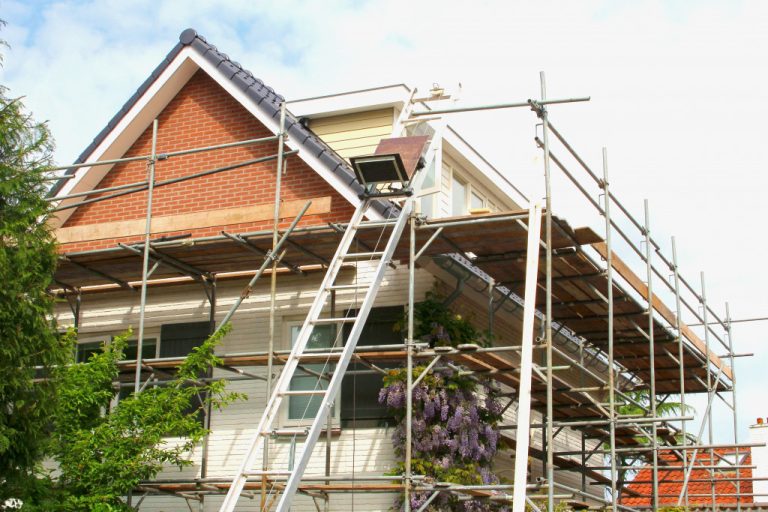- Establish a realistic budget for the renovation process, catering for unexpected costs and prioritizing key projects.
- Inspect crucial structural elements such as the roof and foundation before major renovations to avoid future issues.
- Collaborate with a professional designer to create a cohesive design plan that aligns with personal style and budget.
- Engage in DIY projects where possible for cost savings, quality control, and personal satisfaction while maintaining patience.
Fixer-upper homes are a hot commodity in the real estate market. They represent a unique opportunity for homeowners to put their personal touch on their home, and they are often available at a significantly lower price than move-in ready homes.
However, transforming a fixer-upper into your dream home can be overwhelming. There are many factors to consider, from budget to design, and it can be difficult to know where to start. Fortunately, there are proven strategies for transforming a fixer-upper home that can help make the process smoother and more successful.

Set a Budget
Before you begin any renovations, it’s important to set a realistic budget for your project. This will help you prioritize which projects are most important to you and ensure you don’t overspend. Consider hiring a professional to assess the home and provide a detailed estimate of the work needed. This can help you avoid any surprises down the line.
Unexpected Costs
Setting a budget is crucial to account for unexpected costs that can arise during the renovation. This could include everything from discovering structural issues that need to be addressed to changes in material costs. A good rule of thumb is to set aside an additional 10 to 20 percent of your total budget for contingencies. This will provide a financial safety net for any unforeseen expenses.
Prioritize the Renovations
Once you have a budget, it’s time to prioritize the renovations. Consider which projects will impact your daily life most and which will add the most value to your home. For example, updating the kitchen or bathrooms is often a top priority, as they can significantly improve the functionality and aesthetics of a home. However, balancing these renovations with more practical ones is crucial, such as fixing structural issues or updating the electrical and plumbing systems.
Inspect the Roof and Foundation
Before starting any major renovations, it’s essential to inspect the roof and foundation of your home. These are two critical elements that provide stability and protection to your house. If there are any issues with either, it’s crucial to address them before moving forward with other renovations. Ignoring problems with the roof or foundation can lead to more significant and expensive repairs down the road. If the roof has holes, you should have it fixed by the best roofing company in the area. For the foundation, it’s best to consult a structural engineer to assess potential issues and determine the necessary repairs.
Work with a Designer
If you’re unsure where to start regarding design, consider working with a professional designer. They can help you create a cohesive design plan that fits within your budget and complements your personal style. Additionally, they can help you choose materials and finishes that are both beautiful and durable, ensuring that your renovations stand the test of time.
Design Principles
But even if you decide to work with a designer, you need to understand design principles and your own personal style well. This will help you communicate your vision and preferences effectively to the designer, leading to a more successful collaboration.
Don’t be Afraid to DIY
While it’s essential to hire professionals for certain aspects of your renovation, such as electrical and plumbing work, there are many projects that you can do yourself. Simple tasks like painting and installing shelving are great projects for homeowners to tackle on their own. Not only does this save money, but it also allows you to take pride in your work and feel a closer connection to your home. DIY projects also allow you to add personal touches and creativity to your space.
Benefits of DIY Projects
There are several benefits to taking on DIY projects in your home renovation:
- Cost savings: As mentioned before, tackling some tasks yourself can save you money on labor costs. This is especially beneficial for those on a tight budget.
- Control over quality and timeline: When you do the work yourself, you have more control over the quality and timeline of your project. You can ensure that things are done to your liking and at a pace that works for you.
- Personal satisfaction: Completing a DIY project successfully can bring a sense of personal satisfaction and accomplishment.

Be Patient
Transforming a fixer-upper is a marathon, not a sprint. It’s important to be patient throughout the process and understand that setbacks are inevitable. However, with the right mindset and strategies, the outcome will be well worth the effort. With a well-planned budget, prioritized renovations, and the help of professionals and designers where needed, your fixer-upper home can become your dream home in no time.
Transforming a fixer-upper into your dream home is an exciting process. By setting a budget, prioritizing renovations, working with a designer, undertaking DIY projects, and being patient, you can create a beautiful and functional home. Remember, there will be setbacks and challenges along the way, but with the right strategies and mindset, you can overcome them and create a home you are proud of.







